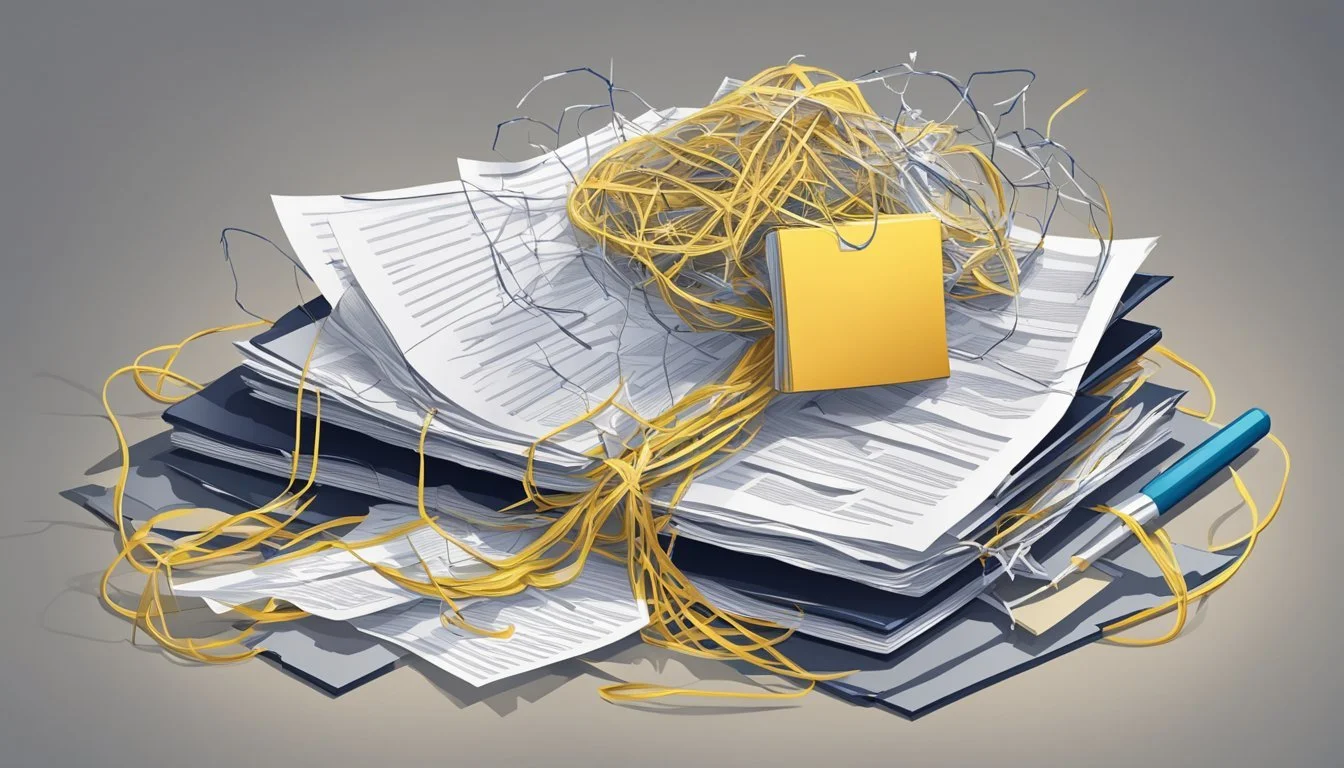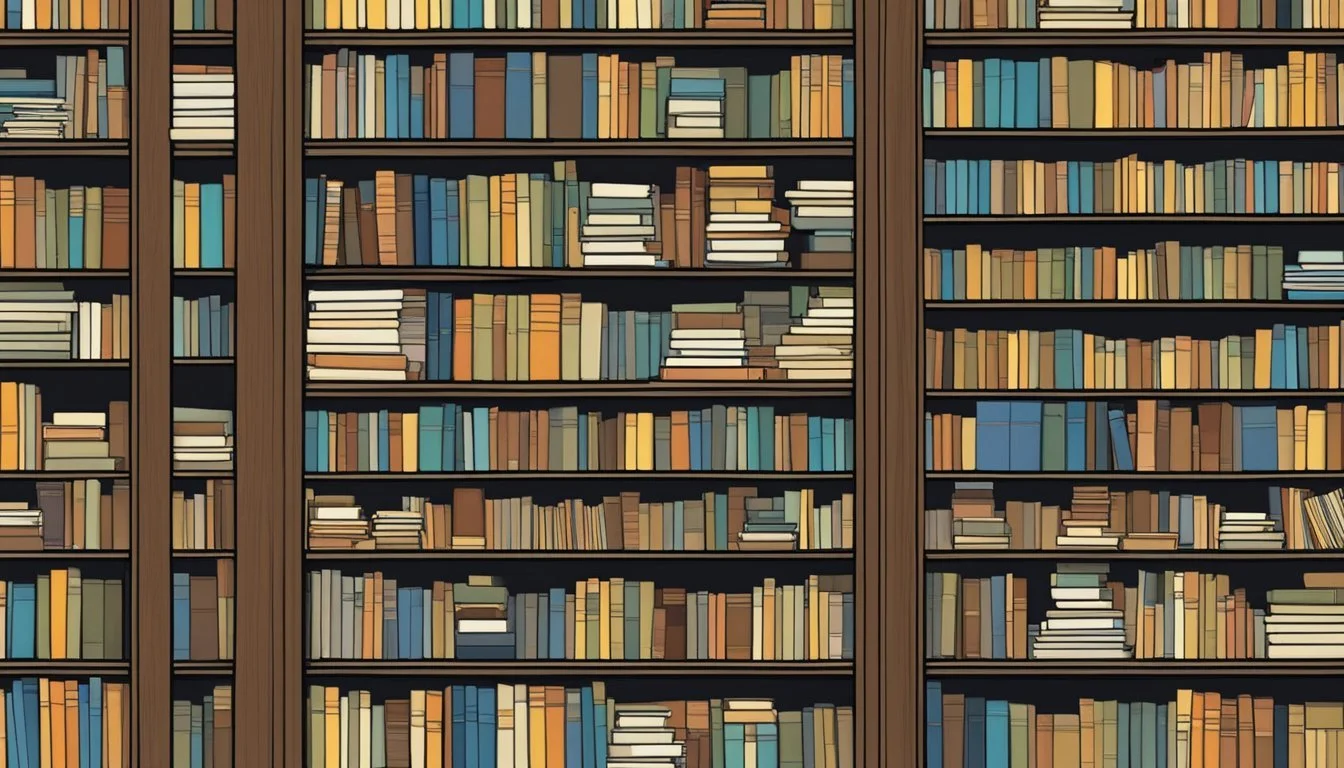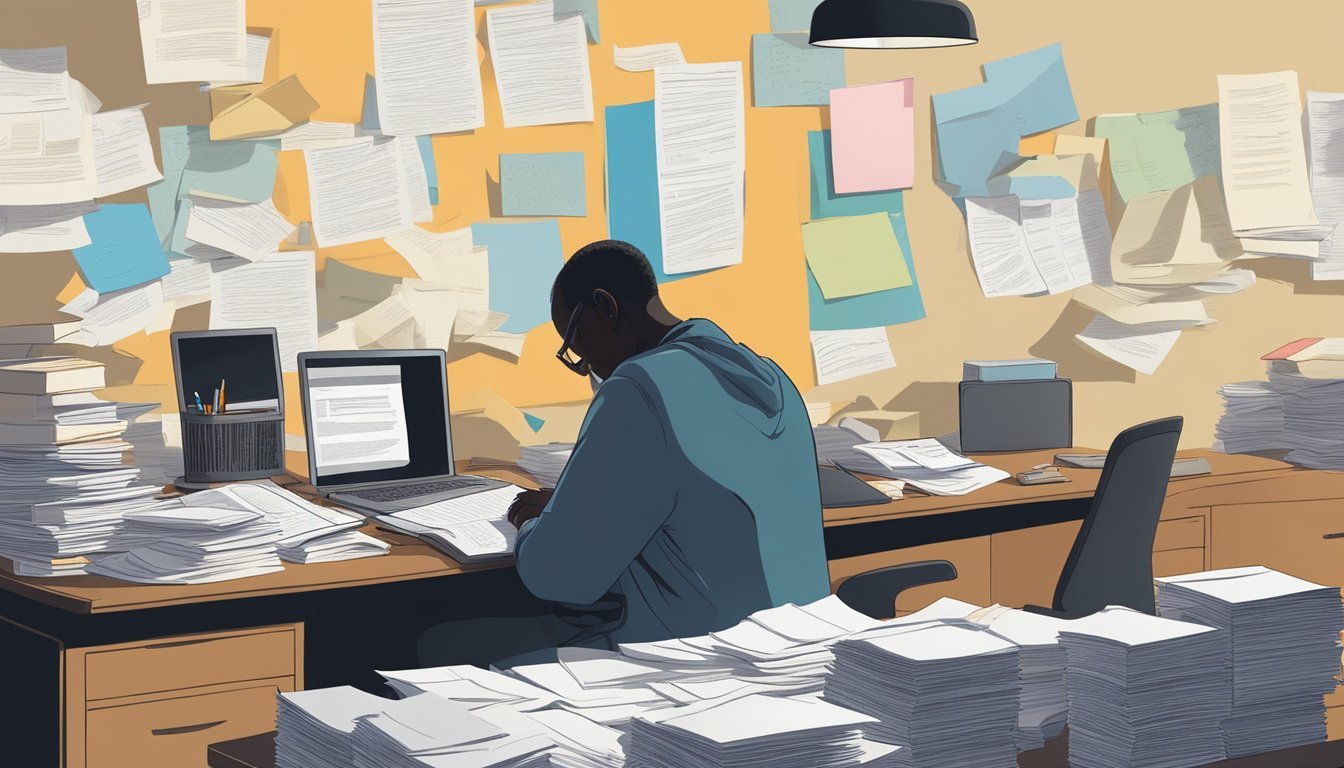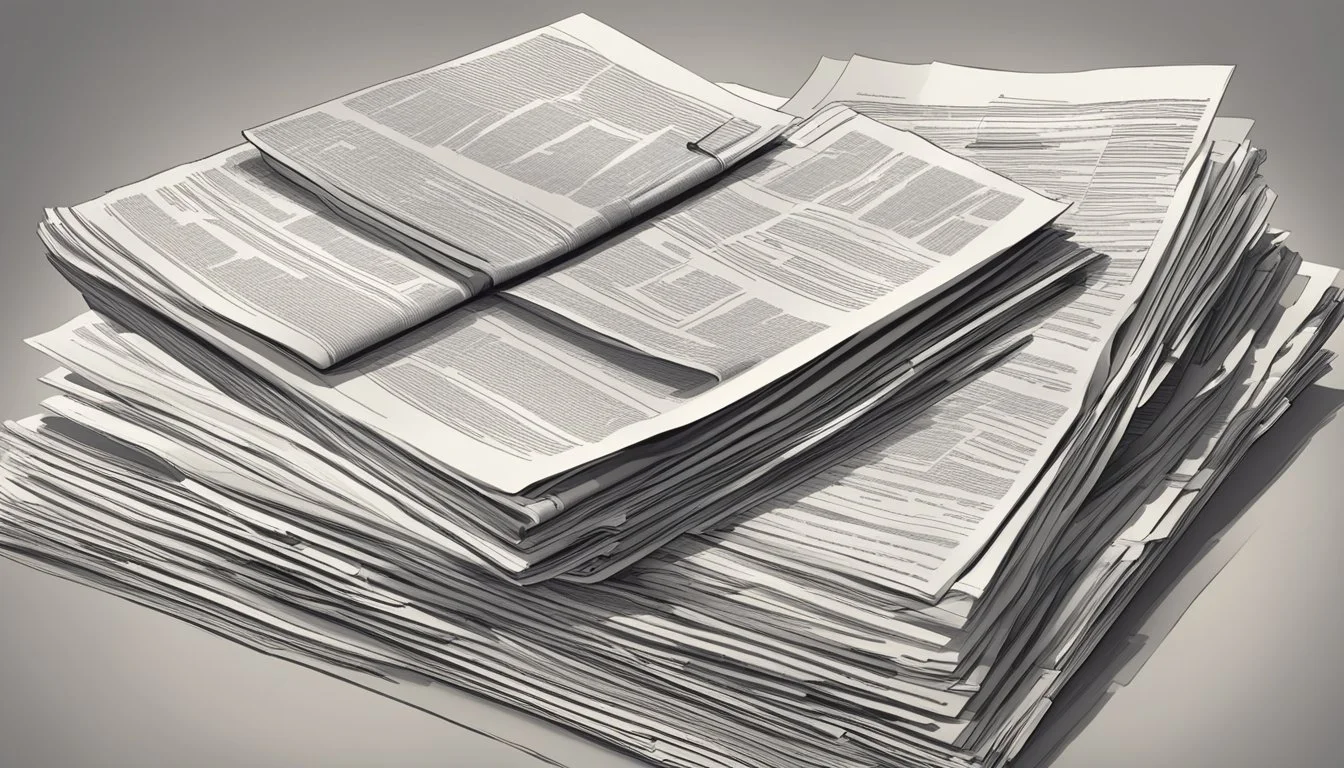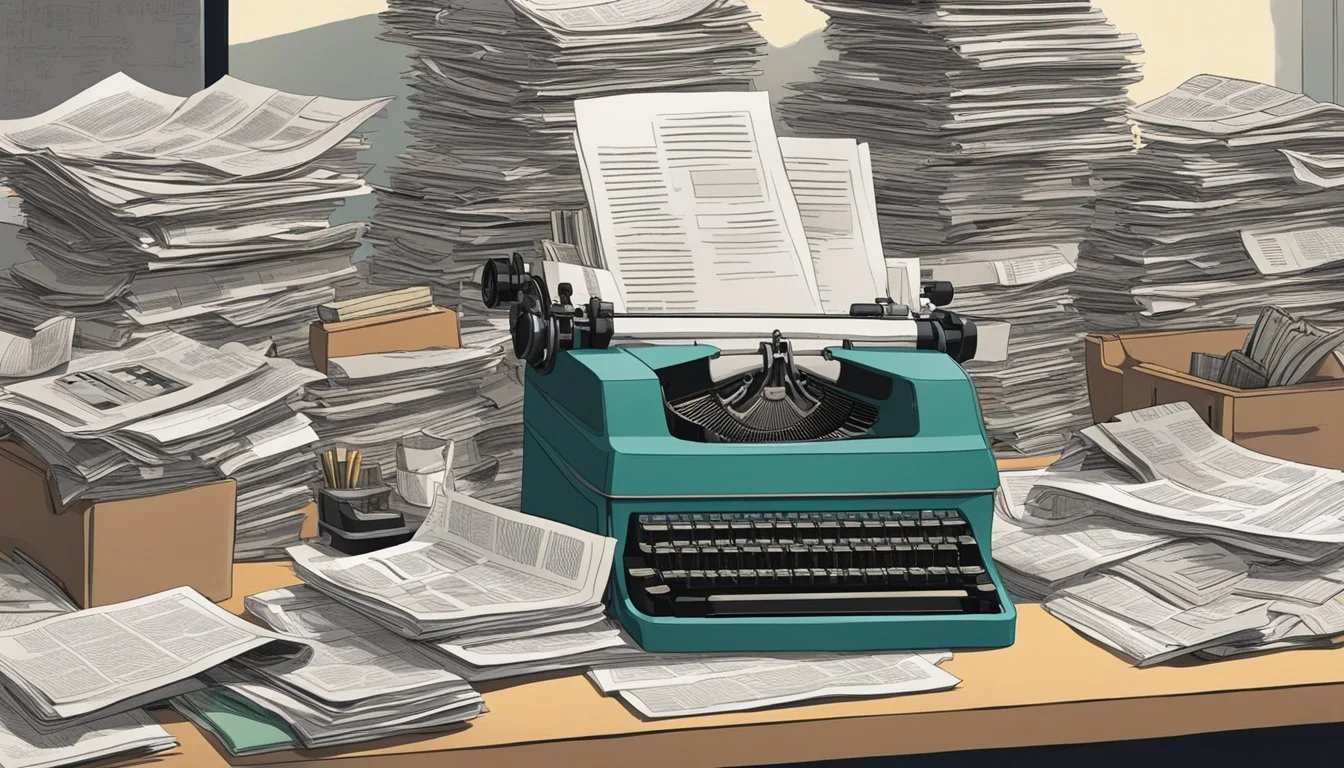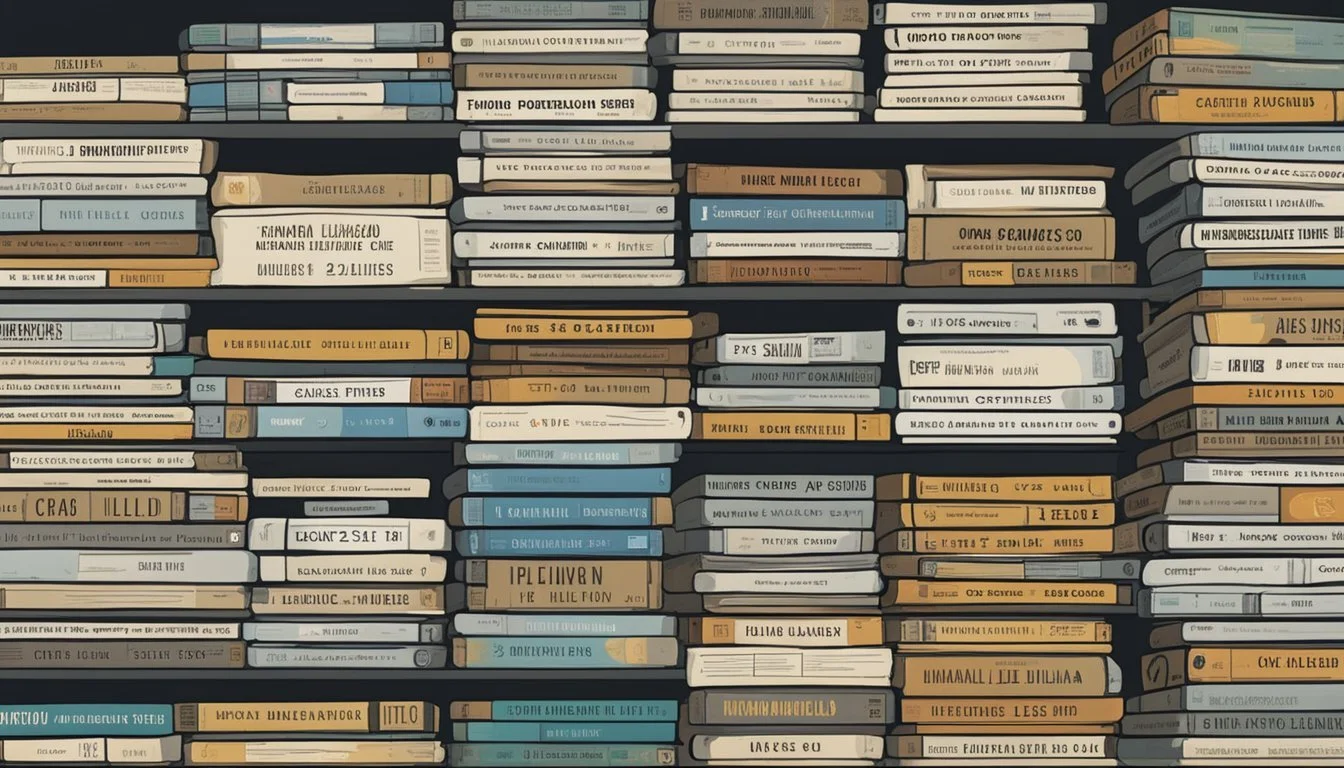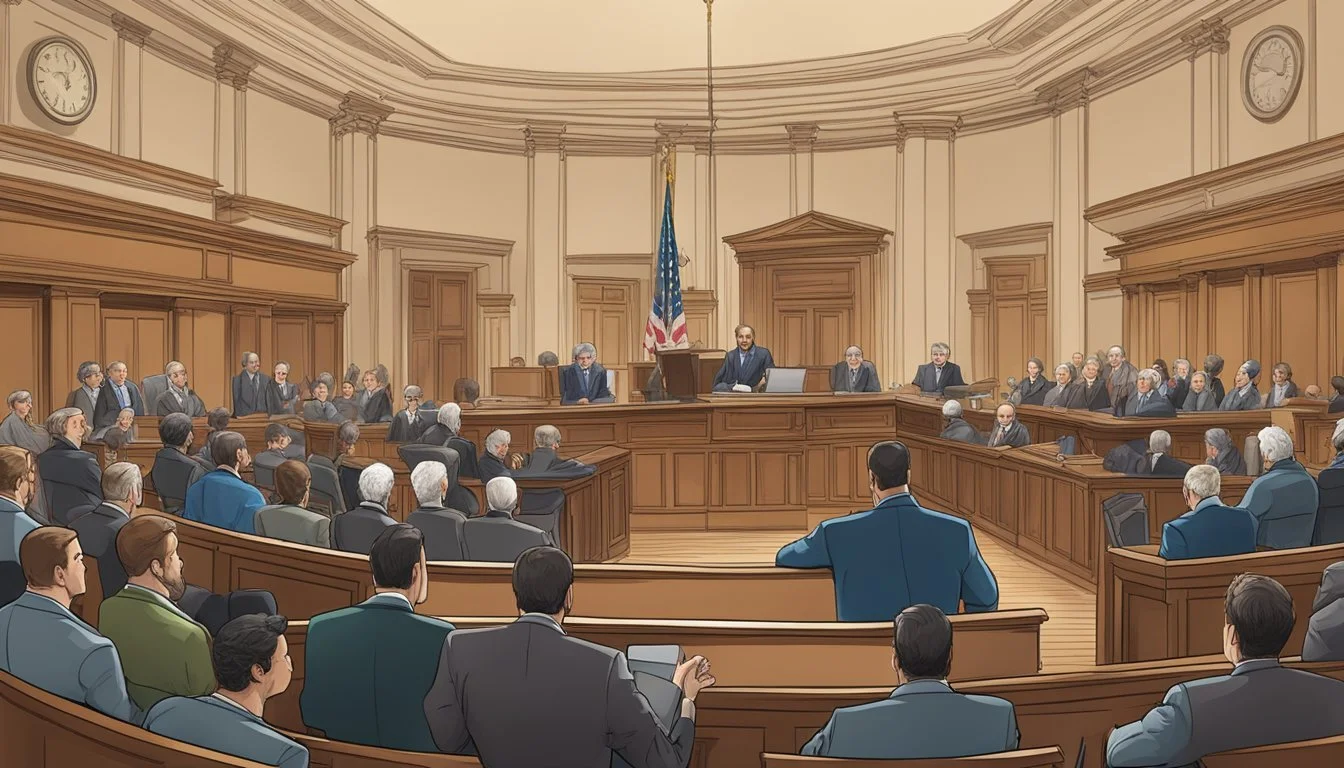9 Riveting Documentaries on High-Profile Plagiarism and Copyright Infringement Cases
Exploring Intellectual Property Battles
Copyright infringement and plagiarism cases have captivated public attention, often involving high-profile individuals and well-known creative works. These legal battles highlight the complexities of intellectual property rights and the challenges of protecting original content in the digital age. Documentaries exploring these cases offer viewers an in-depth look at the intricacies of copyright law and the impact of infringement on creators and industries.
From music and literature to visual arts and technology, copyright disputes span various creative fields. These documentaries delve into the motivations behind infringement, the legal processes involved, and the far-reaching consequences for both the accused and the rights holders. By examining notable cases, they shed light on the evolving nature of copyright in a rapidly changing media landscape.
1) 'Shattered Glass' - The Stephen Glass Scandal
'Shattered Glass' documents the shocking fall of Stephen Glass, a rising star at The New Republic magazine in the late 1990s. Glass fabricated numerous articles, deceiving editors and readers alike with his imaginative yet entirely fictional stories.
The film, released in 2003, dramatizes Glass's deception and eventual exposure. It portrays how he managed to publish 27 partially or completely fabricated articles in the respected political magazine.
Glass's elaborate hoax included creating fake websites, voicemails, and even a fake company to support his false narratives. His deception was uncovered when other journalists attempted to verify his sources for a story about computer hackers.
The scandal rocked the journalism world and raised serious questions about fact-checking processes in media organizations. It highlighted the importance of rigorous verification and the potential consequences of prioritizing sensational stories over accuracy.
'Shattered Glass' serves as a cautionary tale for aspiring journalists and a reminder of the fundamental importance of truth and integrity in reporting. The film's depiction of Glass's downfall continues to be relevant in today's media landscape.
2) 'The Blair Affair' - The Jayson Blair Controversy
Jayson Blair, a young reporter at The New York Times, became the center of a major journalism scandal in 2003. Blair was found to have plagiarized and fabricated numerous stories during his tenure at the prestigious newspaper.
The scandal unfolded when it was discovered that Blair had lifted passages from other publications and invented quotes and details in his articles. His actions led to a thorough investigation by The New York Times, which revealed the extent of his misconduct.
Blair's fraudulent reporting spanned various topics, including high-profile stories about the Iraq War and the Washington, D.C. sniper attacks. The scandal shook the foundation of trust between journalists and the public.
The documentary "A Fragile Trust" by Samantha Grant explores the Blair scandal in depth. It examines the factors that allowed Blair's deceptions to go undetected for so long and the impact on the journalism industry.
The Blair affair prompted discussions about journalistic ethics, fact-checking processes, and the pressure faced by young reporters in competitive newsrooms. It led to significant changes in editorial oversight and practices at The New York Times and other news organizations.
3) 'The Truth of A Million Little Pieces' - The James Frey Saga
James Frey's memoir "A Million Little Pieces" became a bestseller in 2003, captivating readers with its raw account of addiction and recovery. The book's success led to an appearance on Oprah Winfrey's show, propelling it to even greater heights.
In 2006, an investigation by The Smoking Gun website revealed significant fabrications in Frey's memoir. Many of the events and experiences described in the book were found to be exaggerated or entirely fictional.
The revelation sparked a public controversy and debate about the nature of memoirs and truth in non-fiction writing. Frey faced intense criticism and backlash from readers and the media.
Oprah Winfrey, who had initially championed the book, invited Frey back on her show to confront him about the deceptions. This highly publicized confrontation further fueled the controversy surrounding the book.
In response to the scandal, the publisher added an author's note to subsequent editions of the book, acknowledging the fabrications. The incident led to increased scrutiny of memoirs and non-fiction works in the publishing industry.
4) 'Copycat: The Doris Kearns Goodwin Story'
'Copycat: The Doris Kearns Goodwin Story' examines the plagiarism controversy surrounding renowned historian Doris Kearns Goodwin. The documentary delves into the events that unfolded in 2002 when Goodwin faced accusations of copying passages in her book "The Fitzgeralds and the Kennedys."
The film explores Goodwin's explanation that the plagiarism was unintentional, resulting from a flawed note-taking system. It details how her handwritten notes failed to distinguish between her own observations and text from other sources.
Viewers learn about the impact of the scandal on Goodwin's career. The documentary covers her dismissal from PBS's NewsHour and her resignation from the Pulitzer Prize board.
The film also discusses the broader implications of plagiarism in academic and literary circles. It raises questions about the nature of historical research and the challenges of properly attributing sources.
'Copycat' presents interviews with fellow historians, publishers, and ethics experts. These conversations provide context for the controversy and its aftermath.
The documentary concludes by examining Goodwin's efforts to rebuild her reputation and continue her work as a historian. It highlights her subsequent publications and public appearances, demonstrating the complexities of redemption in the academic world.
5) 'The Fabricator: Jonah Lehrer Exposed'
Jonah Lehrer, a rising star in science journalism, faced a career-altering scandal in 2012. At just 31 years old, Lehrer had already published three books and written for prestigious publications like The New York Times and The New Yorker.
The controversy began with accusations of self-plagiarism, as Lehrer reused his own content across multiple platforms without proper attribution. This initial discovery led to further scrutiny of his work.
Investigations revealed more serious breaches of journalistic integrity. Lehrer was found to have fabricated quotes, including those attributed to Bob Dylan in his book "Imagine: How Creativity Works."
As the scandal unfolded, Lehrer resigned from his position at The New Yorker on July 30, 2012. Further examinations of his work uncovered instances of plagiarism in his book "How We Decide."
The revelations prompted Lehrer's publishers to review all of his books. This case highlighted the importance of fact-checking and ethical standards in journalism and non-fiction writing.
Lehrer's fall from grace serves as a cautionary tale about the consequences of fabrication and plagiarism in the publishing industry. It underscores the need for rigorous fact-checking and editorial oversight in an era of rapid information dissemination.
6) 'The Notorious Kaavya Viswanathan Incident'
In 2006, Kaavya Viswanathan, a Harvard University sophomore, found herself at the center of a high-profile plagiarism scandal. Her debut novel, "How Opal Mehta Got Kissed, Got Wild, and Got a Life," initially garnered praise and a substantial book deal.
The controversy erupted when similarities were discovered between Viswanathan's work and several other authors' books. Little, Brown and Co., the publisher, promptly removed the novel from bookstores as allegations of plagiarism mounted.
Viswanathan faced intense media scrutiny and public criticism. The incident sparked discussions about academic integrity, the pressures faced by young authors, and the blurred lines between inspiration and plagiarism.
Despite the scandal, Viswanathan continued her education. She later earned a law degree from Georgetown University. Tragically, during her time in law school, Viswanathan's parents passed away in a plane accident.
The Kaavya Viswanathan case remains a cautionary tale in literary circles. It highlights the importance of originality and proper attribution in creative works, as well as the potential consequences of intellectual property infringement.
7) 'Caught in Action: Janet Cooke's Pulitzer Scandal'
Janet Cooke's story of an 8-year-old heroin addict named Jimmy shocked readers in 1980. Her article "Jimmy's World" appeared on the front page of The Washington Post, captivating audiences with its vivid portrayal of urban decay.
The piece garnered widespread attention and earned Cooke a Pulitzer Prize in 1981. However, her triumph was short-lived. Questions about the story's authenticity soon emerged, leading to an internal investigation by the Post.
Cooke eventually admitted that Jimmy was a fictional character. She had fabricated the entire story, deceiving her editors and the public. The revelation sent shockwaves through the journalism community.
The Post returned the Pulitzer Prize, making Cooke the first and only person to date to do so. Her deception severely damaged the newspaper's reputation and eroded public trust in journalism.
This scandal prompted media organizations to implement stricter fact-checking protocols. It serves as a cautionary tale about the importance of journalistic integrity and the consequences of fabrication in reporting.
8) 'When Harvard Lied: The Marc Hauser Dilemma'
Marc Hauser, a renowned Harvard psychologist, faced allegations of scientific misconduct in 2010. The case sent shockwaves through the academic community and raised questions about research integrity.
Harvard University conducted an internal investigation into Hauser's work. The probe uncovered eight instances of scientific misconduct, including data fabrication and manipulation.
Three of Hauser's published papers required corrections or retractions due to the findings. The affected studies focused on animal cognition and the evolutionary roots of human behavior.
Initially, Harvard kept the details of its investigation confidential. This lack of transparency drew criticism from the scientific community and the public.
In 2014, four years after the investigation concluded, Harvard finally released its report. The delay in disclosure fueled speculation about the university's handling of the case.
Hauser resigned from his position at Harvard in 2011. The U.S. Office of Research Integrity later confirmed the findings of research misconduct.
The Marc Hauser case highlighted the importance of scientific integrity and the need for transparency in academic institutions. It sparked discussions about research ethics and the responsibility of universities in addressing misconduct.
9) 'Accidental Plagiarism: The Helen Keller Case'
Helen Keller, renowned for her remarkable achievements despite being deaf and blind, faced an unexpected controversy in 1891 at the age of eleven. She wrote a short story titled "The Frost King" as a birthday gift for Michael Anagnos, the Director of Perkins School for the Blind.
The story sparked accusations of plagiarism when similarities were noticed between Keller's work and Margaret Canby's "The Frost Fairies." This incident led to intense scrutiny and questioning of the young Keller.
A teacher at Perkins confronted Helen about the story, accusing her of intentional plagiarism. The situation escalated when Mr. Anagnos was informed, leading to further accusations against
The Impact of Plagiarism and Copyright Infringement
Plagiarism and copyright infringement carry serious consequences that extend beyond legal penalties. These actions affect creators, industries, and society at large in profound ways.
Legal Repercussions
Copyright infringement cases can result in substantial financial penalties. In high-profile instances, settlements may reach millions of dollars. The "Blurred Lines" case exemplifies this, where Marvin Gaye's estate was awarded $5 million in damages from Robin Thicke and Pharrell Williams.
Injunctions are another common legal outcome. Courts may prohibit further use of copyrighted material, effectively halting distribution or performance of infringing works.
Legal fees can also accumulate quickly, adding to the financial burden on defendants. Even if a case is dismissed, the costs of defending against infringement claims can be significant.
Cultural and Societal Implications
Copyright disputes can shape creative industries and public perception. High-profile cases often spark debates about artistic inspiration versus imitation.
These controversies may influence future creative processes. Artists and content creators might become more cautious, potentially stifling innovation out of fear of legal repercussions.
Public opinion can shift rapidly in response to copyright claims. Disney's $250 fine to a school for showing "The Lion King" at a fundraiser led to widespread criticism. The incident highlighted tensions between corporate interests and community values.
Copyright cases can also impact market dynamics. Successful claims may result in revenue redistribution within industries, affecting everything from music royalties to technology licensing.
Analyzing High-Profile Cases
Documentaries on plagiarism and copyright infringement cases offer valuable insights into the complexities of intellectual property law. They shed light on the motivations behind these violations and their far-reaching consequences.
Key Lessons from Documentaries
High-profile plagiarism documentaries highlight the importance of proper attribution and respect for intellectual property. They reveal common patterns in copyright infringement, such as ignorance of the law or deliberate attempts to profit from others' work.
Many films explore the blurred lines between inspiration and theft in creative industries. They examine landmark cases that have shaped copyright law and influenced artistic practices.
These documentaries also underscore the severe consequences of intellectual property violations. Legal battles, damaged reputations, and financial penalties are often featured prominently.
Influence on Artistic and Academic Communities
Plagiarism and copyright infringement documentaries have sparked important conversations within artistic and academic circles. They've led to increased awareness of intellectual property rights and the development of more robust citation practices.
In academia, these films have prompted institutions to implement stricter policies on academic integrity. Many universities now use plagiarism detection software and provide extensive education on proper citation methods.
The artistic community has also been impacted, with creators becoming more cautious about borrowing elements from existing works. This has led to debates about the nature of creativity and the limits of fair use in art and music.


